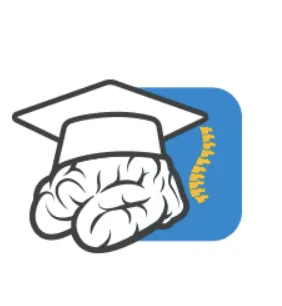Mission Statement
To sponsor educational and research projects that promote the prevention of traumatic cranial and spinal cord injuries. In addition, to support educational and research projects that involve the evaluation, investigation, and treatment of patients with various neurological conditions.
GHFRME
GHFRME is committed to collaborating with medical institutions and businesses that advance medical science through research and enhanced educational programs. Over the years, GHFRME has developed dedicated initiatives to educate patients and the public on the prevention of brain and spinal cord injuries. This has been accomplished through its longstanding support of the international program ThinkFirst, for which GHFRME serves as the primary supporter of the local chapter. From organizing bicycle helmet fitting events and safety programs in partnership with local police and fire departments, to speaking with students in schools, injury prevention has always been—and continues to be—a core focus of GHFRME. Beyond research and education, GHFRME has also partnered with the American College of Lifestyle Medicine. According to the American College of Lifestyle Medicine (www.lifestylemedicine.org), lifestyle medicine is defined as the use of evidence-based therapeutic approaches—including a predominantly whole-food, plant-based diet, regular physical activity, adequate restorative sleep, stress resilience and management, avoidance of risky substance use, and positive social connections—to treat, prevent, and often reverse lifestyle-related chronic diseases that are becoming increasingly prevalent. As GHFRME relationship with the American College of Lifestyle Medicine continues to grow, GHFRME will launch a free educational program in the coming months. This program will explore the past, present, and future of lifestyle medicine, along with an in-depth study of its six foundational pillars.

Papers produced by the GHFRME
The Use of rhBMP-2 to Achieve Posterior Cervical Fusion Without Internal Fixation: Report of Three Cases in Adults.
Vargas, D., Back, A.G., Shedden, P.M. Internet Journal of Spine Surgery, Vol. 4(2).
A Report of the Use of Embolization Followed by Staged Gamma Knife Radiosurgery for the Treatment of a Large AVM in a 12 year-old boy.
Back, A.G., Vollmer, D.G, Zeck, O., Shkedy, C., Shedden, P.M. Canadian Journal of Neurological Sciences.
Retrospective Analysis of Unstaged and Staged Gamma Knife Radiosurgery With and Without Preceding Embolization for the Treatment of Arteriovenous Malformations (AVMs).
Back, A.G., Vollmer, D.G., Zeck, O., Shkedy, C., Shedden, P.M. Journal of Neurosurgery 109 Suppl: 57-64, 2008.
An Unusual Presentation of Lower Back Pain Leading to a Diagnosis of a Foramen Magnum Meningioma: a Case Study.
Back, A.G., Shedden, M.K., Shedden, P.M., paper in preparation.
Use of Betadine in Lumbar Laminectomy Surgery to Prevent Post-operative Wound Infection.
Back, A.G., Shedden, M.K., Shedden, P.M., paper in preparation.
